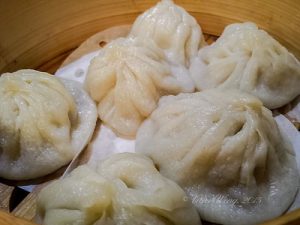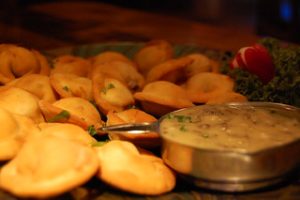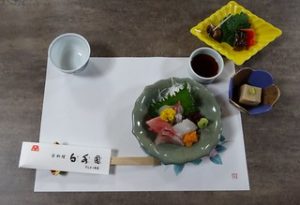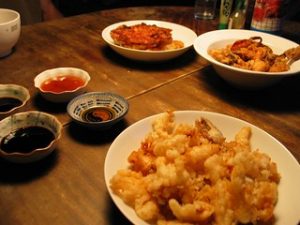Welcome back! This week I will be looking at Greek cuisine. Greek cuisine is known for being an incredibly healthy diet.
The first dish that I am going to look at is souvlaki. This dish is extremely popular not only in Greece but in lots of other parts of the world. This dish is Greece’s version of fast food. It is composed of small pieces of meat or vegetables. These pieces of meat/vegetables are grilled on a skewer. This skewer is then either served still on the stick or wrapped in pita. The pita is also filled with food such as tomato, onion, or creamy tzatziki sauce. The most popular meats for souvlaki are lamb and pork, but grilled chicken and goat are also meats that can be used. This dish can be served as either an entree or side dish.
Spanakopita is a dish that is usually eaten as a snack or appetizer. This dish is commonly made of spinach, feta cheese, onions, egg, and seasoning all wrapped up in filo dough. This dough is a thin, unleavened dough commonly used in pastries. This dough is also usually wrapped in layers around the fillings to create a crisp, flaky package.
Kolokythokeftedes is a traditional Greek dish. This dish in more simple terms is zucchini fritters. There is grated zucchini combined with feta cheese and herbs. This combination is then breaded and served in patty form or shaped into a ball and fried. This dish is usually served with tzatziki sauce.
Pastitsio is similar to lasagna. This dish is made with tubular pasta instead of pasta sheets. The pasta is typically bucatini. This pasta forms the top and bottom layers of the dish. The filling of this dish is ground meat, tomato, cinnamon, and allspice. The dish is then topped with thick, creamy bechamel sauce and cheese.
Greece is very popular for its salads. Horiatiki salata is a traditional Greek salad. This salad has many variations. The traditional version of this salad includes vegetables like tomato, onion, cucumber, and bell pepper. These ingredients are typically mixed with olives and hot peppers. This salad is then seasoned with extra virgin olive oil, oregano, and sea salt with feta cheese on top. This salad has many variations, with the traditional one typically not including lettuce.
A common Greek snack food is horta vrasta. This dish is composed of leafy greens, such as the sweet leaves of spinach or the bitter greens of dandelions. These greens are boiled and drizzled with extra virgin olive oil and lemon.
A common Greek dessert is galaktoboureko. This dish is often related to baklava for those who are not Greek. This dish is made by wrapping custard in thin filo sheets, baking them until they are golden brown, and soaking them in lemon syrup until it is ready to serve.
Thank you for reading my blog! Next week, I will be discussing Spanish cuisine.
(Pastitsio)

(Spanakopita)

Attributions:
“Greek Pastitsio” by Jeff Cushner under CC BY-NC-ND 2.0.
“Spanakopita” by Kim under CC BY-SA 2.0.
Information:
https://theculturetrip.com/europe/greece/articles/12-delicious-greek-dishes-you-have-to-try/



















